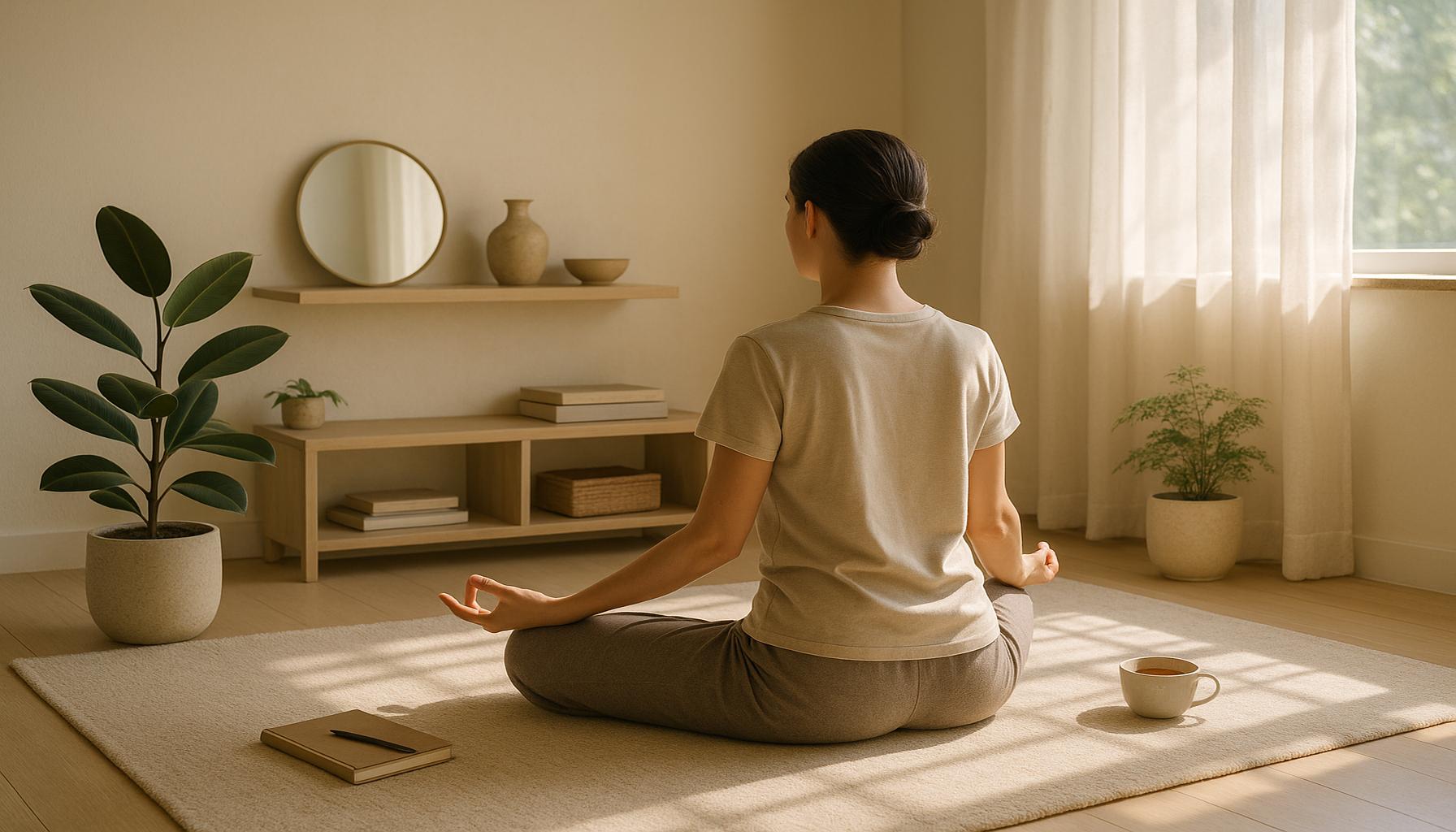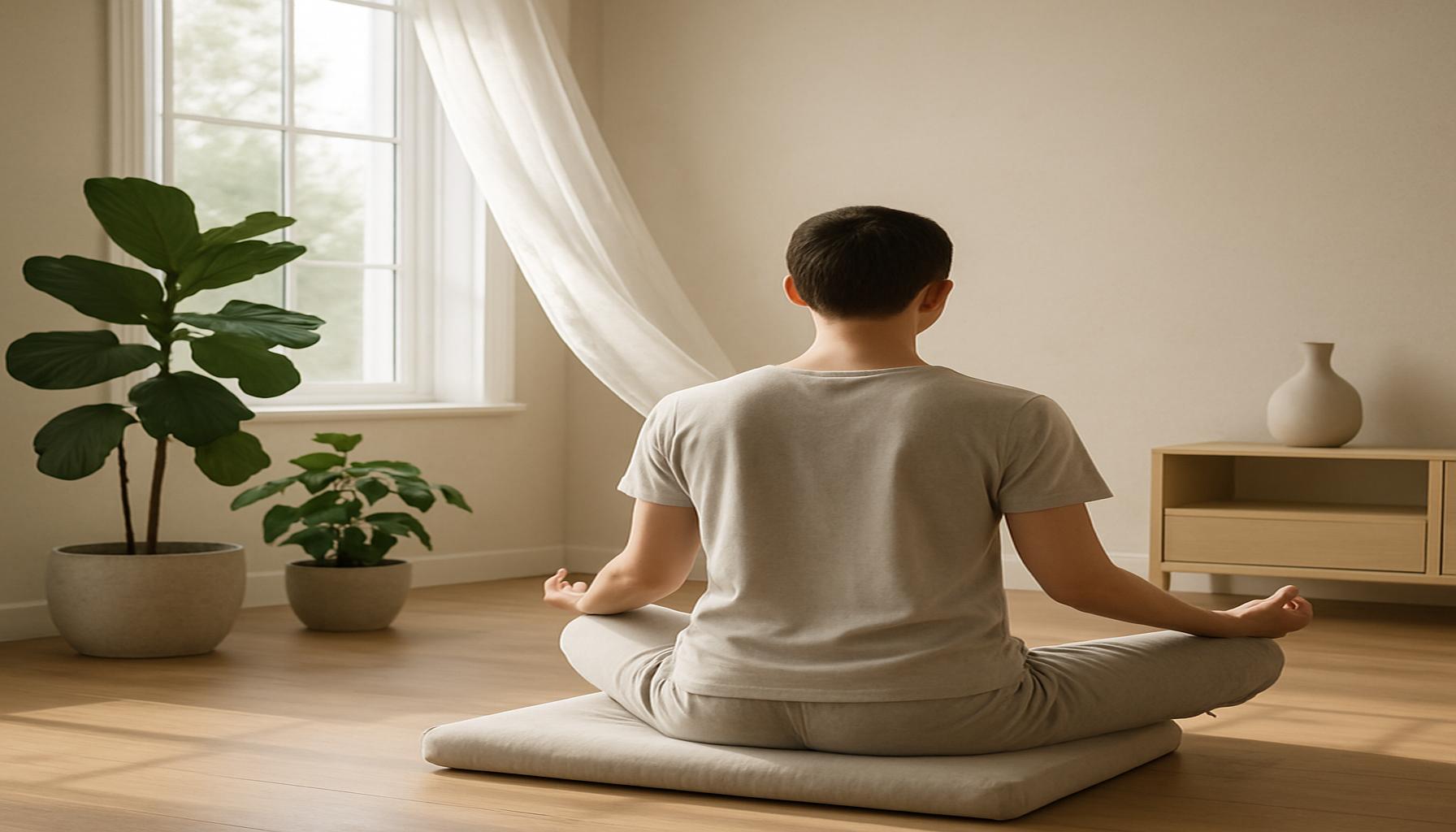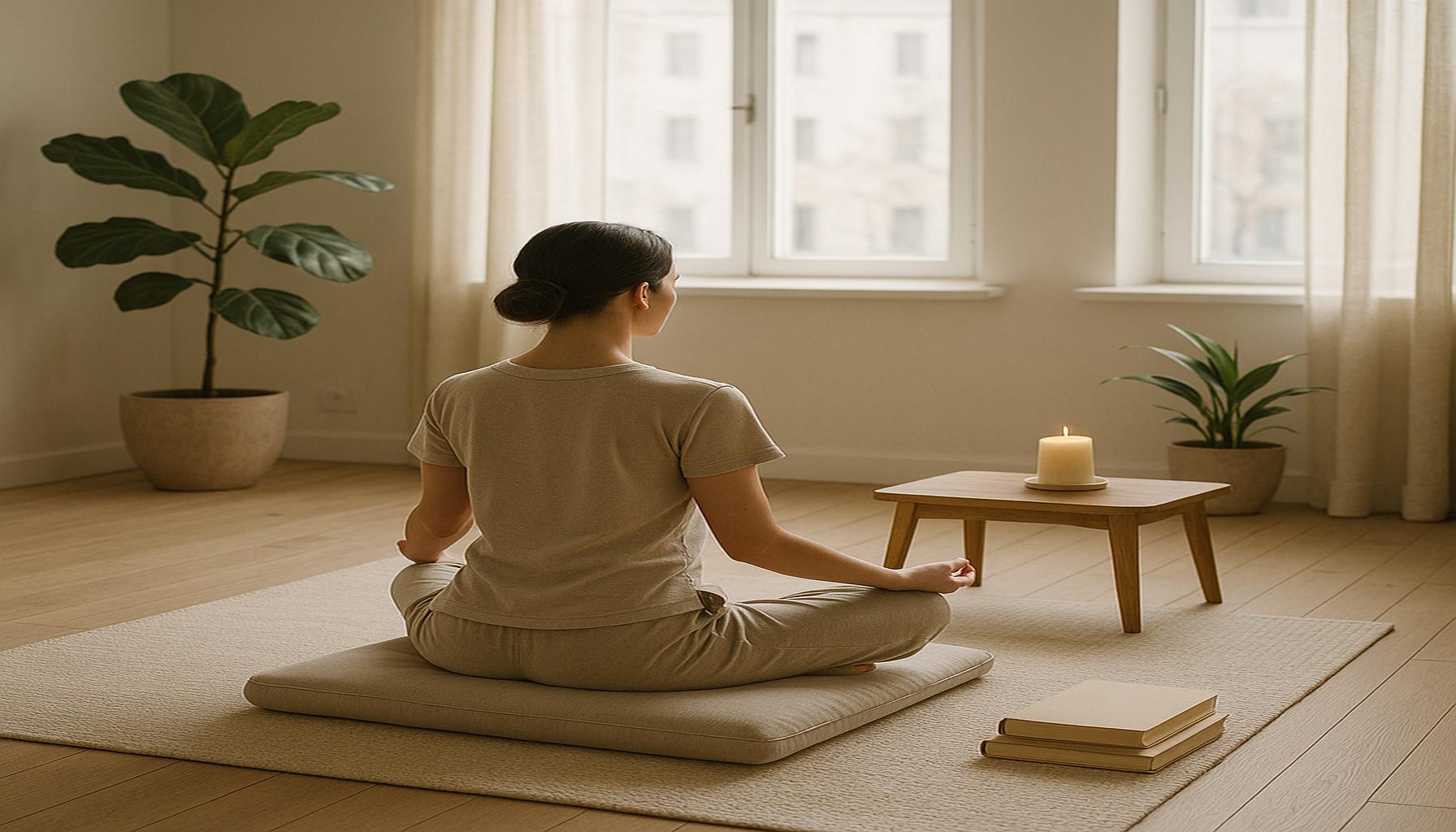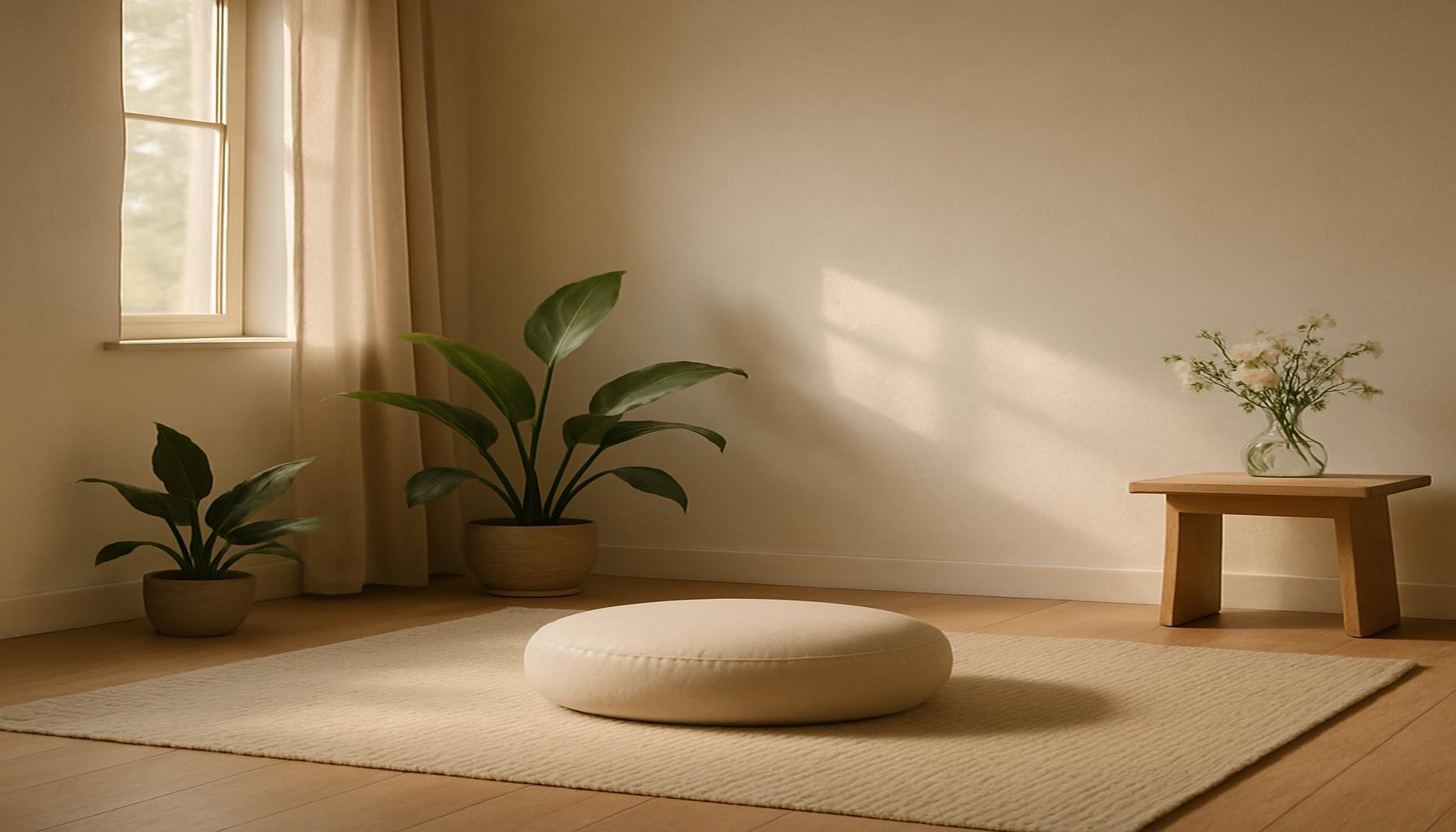Mindfulness Strategies to Maintain Motivation in the Decluttering and Minimalism Journey

Embarking on a Mindful Decluttering Journey
The journey towards a minimalist lifestyle is often marked by numerous challenges, with the process of decluttering frequently emerging as one of the most daunting tasks. The sheer volume of possessions accumulated over the years can weigh down our physical spaces and mental clarity. As you embark on this transformative endeavor, maintaining motivation becomes essential. By integrating mindfulness strategies, the declutter journey can evolve into a more rewarding and enlightening experience, allowing you to reconnect with what matters most.
Embracing the Power of Mindfulness
To harness the benefits of mindfulness, consider several foundational elements that can invigorate your journey:
- Focus on the Present: One of the key tenets of mindfulness is grounding yourself in the moment. When tackling a specific area of your home, such as a cluttered garage or a stuffed closet, engage fully with the task at hand. Rather than being distracted by thoughts of what remains to be done, immerse yourself in the act of sorting, organizing, and letting go. Recognize the positive changes occurring in your space, and allow these moments of clarity to lighten your mental load.
- Set Intention: Understanding your motivations for decluttering is crucial. Perhaps you wish to create a tranquil personal retreat where you can unwind after a long day, or maybe you’re looking to simplify your life following a significant life change. Whatever your reasons, clearly articulating them can keep you grounded and focused during challenging moments. Writing down your intentions and placing them where you can see them will reiterate your goals and inspire you to push through obstacles.
- Practice Gratitude: Each object in your home often carries a story or a memory. Approach the decluttering process with a mindset of appreciation for these items. When you decide to part with an item, take a moment to reflect on its role in your life. By fostering gratitude, you shift the focus from loss to celebration, creating a positive emotional outcome even as you let go.
These mindfulness techniques not only elevate your motivation but also imbue the process of decluttering with deeper significance. Engaging in a mindful practice allows for profound insights into the values that guide your life, steering you toward a more intentional existence.
A Step Towards Serenity
As you navigate your decluttering journey, keep in mind that every small step contributes to a broader aim of simplicity and serenity. Whether it’s committing to ten minutes of tidying daily or dedicating a weekend to overhaul a specific room, the cumulative effect of these efforts can be life-changing.
With these mindful strategies, you can transform mundane decluttering tasks into moments of clarity and revelation. As you find balance in your journey, you may discover not just a cleaner space but also a clearer mind, guiding you toward a sustainable minimalist lifestyle that aligns with your values and aspirations.

DISCOVER MORE: Click here to enhance your personal organization
Cultivating a Mindful Mindset
One of the most significant barriers to maintaining motivation during the decluttering process is the overwhelming nature of the task. Often, individuals find themselves paralyzed by choices or discouraged by the sheer volume of belongings they wish to part with. To bypass this mental block, integrating mindfulness strategies can be essential in cultivating a more manageable and fulfilling experience. Here are several techniques to help maintain your momentum:
- Create a Ritual: Establish a personal decluttering ritual that provides a sense of routine and purpose. Whether it’s dedicating Sunday afternoons to decluttering or starting each day with a morning mindfulness session, having a structured approach can create an expectation and enhance commitment. Use this time for reflection and to connect with your motivations behind minimizing your possessions.
- Break It Down: Instead of viewing decluttering as a monumental task, break it down into smaller, actionable goals. Focus on one drawer, one shelf, or one room at a time. This method not only makes the process less daunting but also allows you to celebrate small victories along the way. Each completed section reinforces your motivation, proving that progress is being made.
- Visualize Your Space: Spend time visualizing your ideal minimalist space. Close your eyes and imagine how different your living areas could feel with less clutter. Picture an open, serene environment where each item serves a purpose and contributes to your peace of mind. This imaginative exercise can regenerate your passion and determination to clear away the physical and mental obstacles holding you back.
- Limit Distractions: Mindfulness is rooted in focus, so it’s essential to create an environment conducive to concentration. Turn off electronic devices, select soothing music, or even enjoy silence while engaging in your decluttering tasks. By minimizing distractions, you can better connect with the feelings and thoughts that arise during the process, and address them constructively.
These mindfulness strategies can help keep your focus sharp and motivation high, allowing you to engage with your decluttering journey meaningfully. As you apply these techniques, you may find that the act of letting go transforms from a burdensome chore into a liberating and reflective practice, deepening your understanding of what truly adds value to your life.
Navigating Emotions in the Process
Decluttering often stirs up a plethora of emotions, from nostalgia to guilt. It’s vital to acknowledge these feelings without letting them derail your efforts. Embracing your emotional responses as part of the journey allows for a more authentic experience, prompting you to reflect on your attachments and ultimately guiding you to a more meaningful minimalist lifestyle.
Utilizing the mindfulness strategies outlined can provide a strong foundation for maintaining motivation and steering you through the emotional landscape of decluttering. As you cultivate this mindful approach, you’ll discover that each decision to let go brings you closer not just to a simpler space, but also to a more intentional and enriched way of living.
Mindfulness Strategies to Maintain Motivation in the Decluttering and Minimalism Journey
| Strategy | Benefits |
|---|---|
| Mindful Reflection | Encourages deeper understanding of attachment to items, promoting intentional choices. |
| Gratitude Journaling | Enhances appreciation for what you own, boosting motivation to declutter thoughtfully. |
Emphasizing the practice of mindful reflection invites individuals to pause and consider why they hold onto particular possessions. This strategy not only enriches the decluttering experience but also aids in recognizing patterns of behavior associated with materialism. By understanding these emotional ties, individuals can make more intentional choices about what to keep or let go. Meanwhile, implementing gratitude journaling can serve as a powerful motivator in the decluttering journey. Writing down what you appreciate about your belongings can change your perspective, allowing you to let go of excess with a sense of fulfillment rather than loss. This practice fosters a mindset centered on quality over quantity, aligning well with minimalism principles. These mindfulness strategies collectively guide one towards a more conscious approach to both decluttering and minimalism, making the journey not just about space creation but also about mental and emotional clarity. The motivations to streamline living spaces become intertwined with a sense of purpose and self-discovery, making the entire process more enriching. By engaging with these strategies, individuals can create a more balanced and intentional lifestyle.
DISCOVER MORE: Click here to enhance your organization skills
Nurturing Self-Compassion During Your Journey
As you navigate the decluttering process and embrace minimalism, one of the most important aspects to consider is the role of self-compassion. Decluttering is not merely a physical act; it is emotionally and mentally challenging. Many individuals tend to be overly critical of themselves when evaluating their belongings and the decisions they make. Practicing self-compassion can lead to a more positive and motivating experience.
First, acknowledge that the clutter accumulated over time represents a tangible history of life experiences, relationships, and emotions. Remind yourself that it is completely natural to feel attached to certain items. By confirming these feelings, you reduce self-judgment and create a space for your emotional reactions. Use affirmations such as, “It’s okay to feel this way,” or “I am doing the best I can,” to promote a gentler inner dialogue. This shift in mindset allows you to approach decision-making with a clearer perspective, reinforcing your motivation to move forward.
Incorporating self-compassion exercises can further aid in this process. Try journaling about your decluttering journey; write down your thoughts about specific items and why they hold significance for you. Reflecting on these feelings can enhance your understanding of what you truly value, ultimately guiding your decluttering efforts. Additionally, consider practicing guided meditations that focus on self-acceptance and forgiveness. These practices can help alleviate feelings of guilt or regret associated with letting go of items, fostering a mindset conducive to progress.
Engaging in Mindful Decision Making
Another effective strategy for staying motivated is engaging in mindful decision making during the decluttering process. It is easy to feel rushed or overwhelmed, but implementing mindfulness techniques encourages a more thoughtful examination of each item in your space. When deciding whether to keep or part with an object, take a moment to breathe deeply and center yourself. Ask yourself guiding questions like, “Does this item bring me joy?” or “How does this contribute to my life today?”
This reflection period enables you to weigh each decision with care, fostering clarity and confidence. Consider using the “one in, one out” rule—every time you introduce a new item into your space, commit to letting go of another. This practice not only structures the way you acquire belongings but also nurtures a mindful consumption mindset that aligns with minimalist principles.
To further bolster your motivation, you might find it beneficial to create a visual representation of your journey. Consider maintaining a decluttering journal, complete with before-and-after photos or a collage that illustrates your evolving space. This visual documentation serves as a tangible reminder of your progress and the positive impact decluttering has on your environment and mental well-being. Witnessing your changes over time provides ongoing motivation, reinforcing the belief that your efforts are worthwhile.
By integrating self-compassion and mindful decision-making into your decluttering routine, you not only enhance your motivation but also cultivate a more meaningful and enriching minimalism journey. Each conscious choice made leads to an intentional living space that reflects your values while supporting your core mental well-being.
DISCOVER MORE: Click here to learn how minimalism can enhance your decision-making
Conclusion: Embracing Mindfulness for Sustainable Minimalism
The journey towards decluttering and minimalism can often feel overwhelming, but by integrating mindfulness strategies, you can cultivate a sustainable motivation that empowers you throughout the process. As explored, self-compassion plays a vital role in easing emotional burdens associated with letting go of belongings, allowing for a healthier relationship with your possessions. Embracing moments of reflection and gentle affirmations can shift your mindset, making the decluttering journey feel less like a chore and more like a rewarding personal evolution.
Engaging in mindful decision-making further enhances your ability to evaluate your belongings with clarity. By asking thoughtful questions about each item’s relevance and emotional resonance, you build an intentional approach to your possessions that aligns with your values. The “one in, one out” rule not only structures your lifestyle but also encourages conscious consumption, reinforcing the minimalist philosophy.
Visual documentation of your progress serves as an inspiring reminder of how far you’ve come. By capturing the transformation of your space, you create tangible proof of your efforts, reinforcing motivation and leading to greater satisfaction in your evolving environment. Ultimately, this journey is about more than just physical space; it is a path to mental clarity and emotional balance. By continuing to prioritize mindfulness throughout your decluttering efforts, you foster an enriching lifestyle that supports well-being and nurtures your essential values.
As you embark on or continue your own decluttering and minimalism journey, remember that every small step counts. Through the application of these mindfulness strategies, you invite a refreshing perspective that can transform your living space and invigorate your spirit, paving the way for a more intentional, peaceful life.


